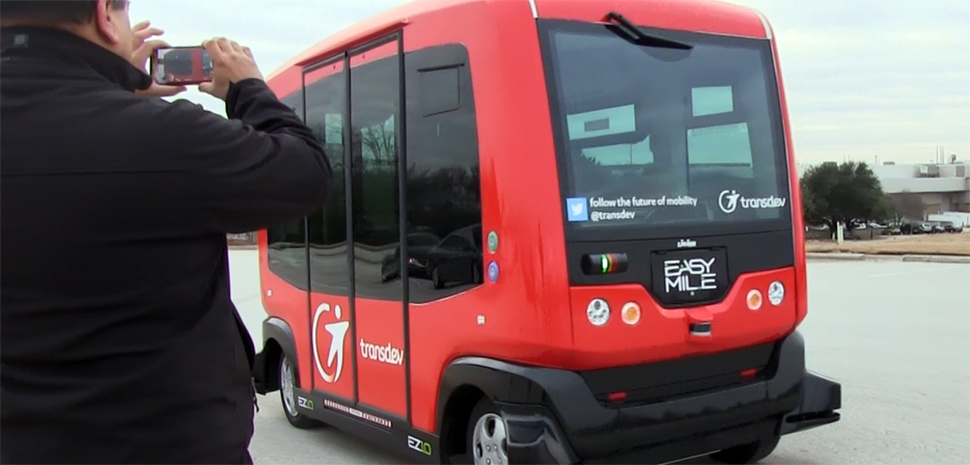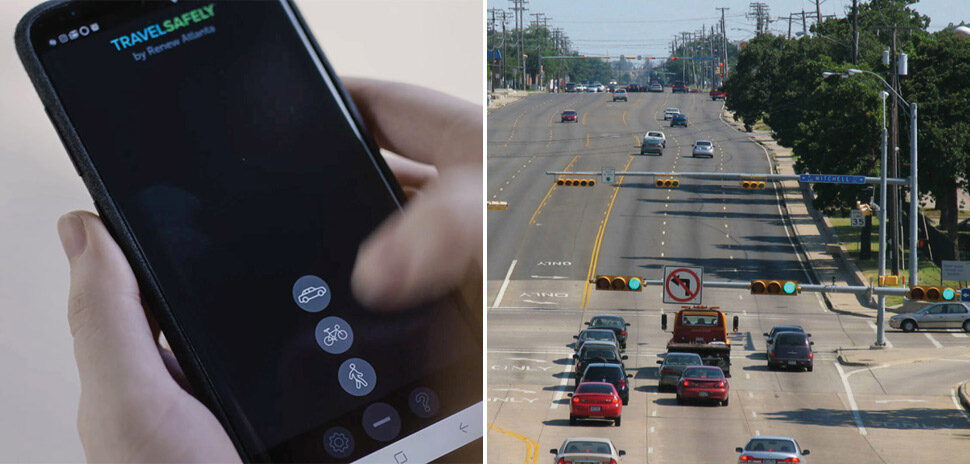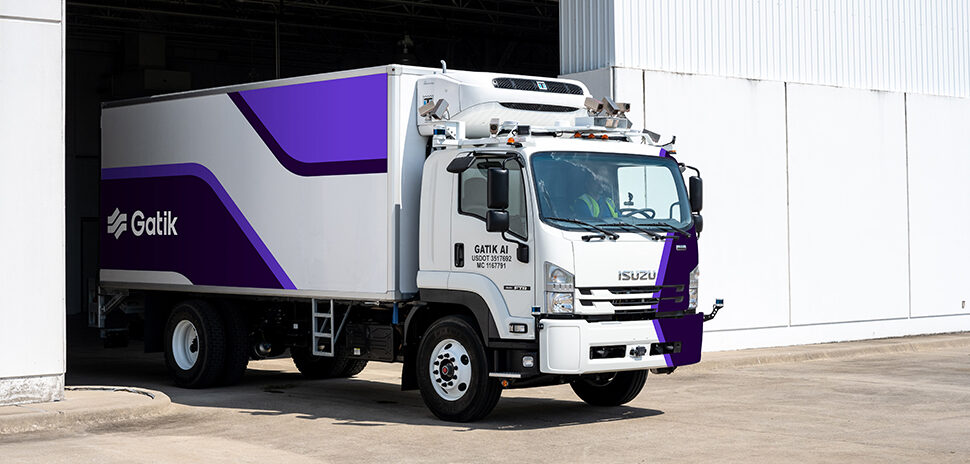![]() With Six Flags Over Texas to his back, and the homes of the Texas Rangers and the Dallas Cowboys on either side, what in the name of Arlington, Texas, was Ron Reynolds doing waiting in line in a parking lot to ride a self-driving electric trolley with a top speed of 25 mph?
With Six Flags Over Texas to his back, and the homes of the Texas Rangers and the Dallas Cowboys on either side, what in the name of Arlington, Texas, was Ron Reynolds doing waiting in line in a parking lot to ride a self-driving electric trolley with a top speed of 25 mph?
“I think this is inevitable,” said Reynolds, an Arlington resident alluding to the chance that self-driving trolleys such as these could one day serve as public transport in his city, which has no public transportation.
“Many people age 60 and over want to go places, but they shouldn’t be driving,” he said. “If you could use a smartphone and have one of these come to your door, it would be amazing.”
In short, Reynolds was describing Uber with robots.
Looking more like an electric pencil sharpener than a heartless automaton, the EasyMile shuttle, which Reynolds and dozens of other area residents rode, is one group’s vanguard in its barnstorming tour to allay public fears of robots driving them off cliffs, and to make them realize the beauty of drama-free transportation.
“I love to drive, but there’s a greater good here.”
PAUL BRUBAKER
Thursday was yet another stop for the group, called the Alliance for Transportation Innovation, which is circling the country with a $250,000, six-seat (alleged capacity for 12) rectangle that has no driver, but travels precise, programmed routes and will stop on a dime if anything crosses its path. The battery-powered, whisper-quiet vehicle is loaded with sensors, electronics and lasers that constantly probe its surroundings for obstacles.
More than 60 people attended a roundtable discussion during the demonstrations, where they learned a short history of breakthroughs in the transportation industry, how autonomous vehicles work, and took part in a workshop on how the technology could affect them.
Speaking to a group of industry representatives and Arlington residents, ATI President and CEO Paul Brubaker compared the apprehension caused by self-driving vehicles today to the disruption that resulted in the United States in the early 1900s, when automobiles started to be mass-produced, and began replacing horses as primary people-movers.
Brubaker, who said he still adores driving his classic Mustang way too fast, said his main motivation in promoting the use of autonomous vehicles is eliminating vehicle-related fatalities and accidents. Brubaker and his group are also championing autonomous vehicles for their abilities to reduce traffic jams, pollution, and to improve mobility for people with disabilities and elderly people.
“I love to drive, but there’s a greater good here,” said Brubaker, whose great-grandfather was killed by a vehicle while crossing the street to go bowling decades ago. “We can save 35,000 lives [each year].”
“Technology like this will be the future and signifies great opportunities for transportation.”
JEFF WILLIAMS
The road trip inspired some hopeful talk from Arlington Mayor Jeff Williams, who, in a written statement, said the city is ready to make a leap forward in its transportation planning.
“That’s why we’re so pleased to host the 2017 Autonomous Road Trip in Arlington,” he said in the statement. “Technology like this will be the future and signifies great opportunities for transportation.”
READ NEXT
Feds Include Arlington, UTA in Self-Driving Vehicle Study
SMU Students Taking Wireless Vehicle Tech to the Streets
Frisco Becomes 1st Inland Proving Ground For Smart Car Tech
Delivering what’s new and next in Dallas-Fort Worth innovation, every day. Get the Dallas Innovates e-newsletter.











![TI's new radar sensor gives automotive engineers more tools that can fuel vehicle innovation. [Source image: Texas Instruments]](https://s24806.pcdn.co/wp-content/uploads/2022/01/TI-radar-sensor_courtesy-970x464.jpg)






















































